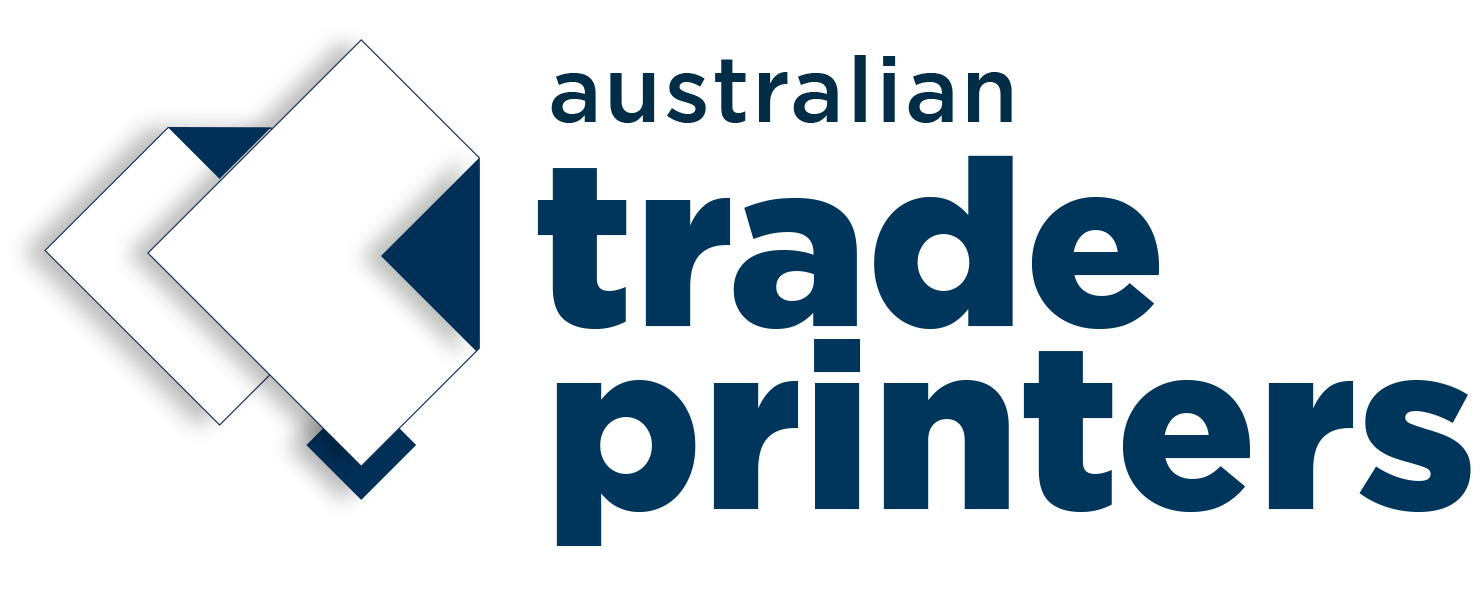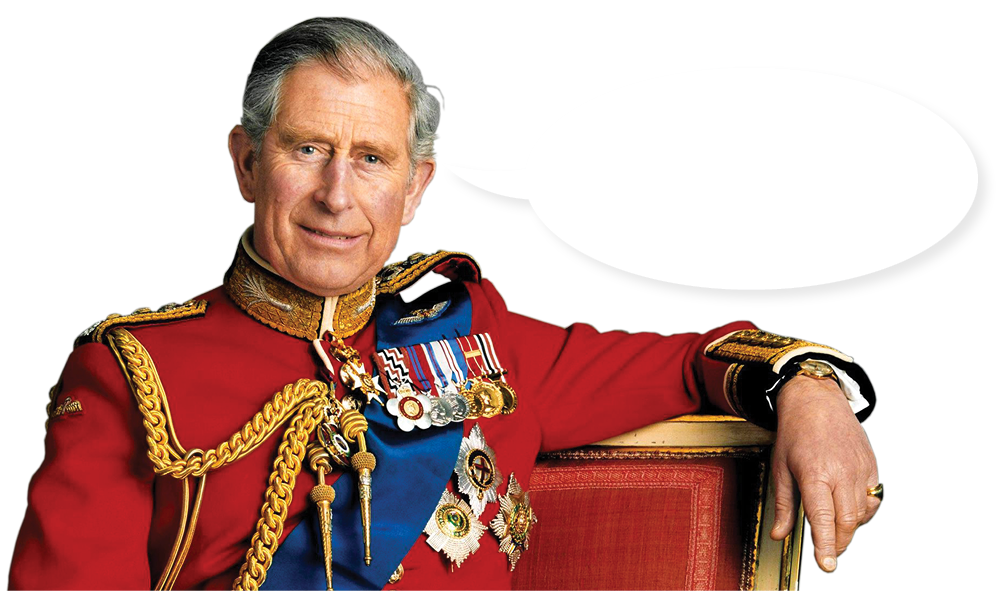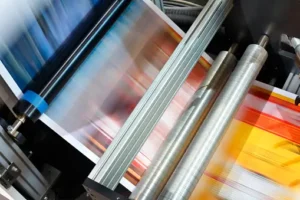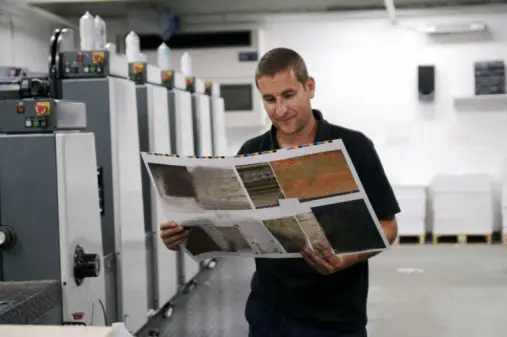
In today’s business landscape, Colour printing plays a crucial role in marketing materials, business documents, and more. However, the costs associated with commercial printing can quickly add up, making it essential for businesses to find ways to save money without compromising on the quality of their prints. In this article, we will explore various strategies and tips to help businesses achieve cost-effective and cheap printing while still obtaining high-quality results.
From understanding commercial printing costs to optimizing print quantities and exploring digital printing, we will cover all aspects of cheap printing. Our goal is to provide practical advice and insights that businesses can implement to reduce their printing expenses without compromising on the professionalism and visual appeal of their prints.
Whether you’re a small business owner looking for affordable printing services or a large corporation seeking to streamline your printing budget, this article will provide you with the information and guidance you need to make informed decisions. By implementing the cost-saving measures discussed here, you can achieve cheap printing without sacrificing quality and maximize the value of your printing investments.
Key Takeaways:
- Understanding commercial printing costs is essential for managing your printing budget effectively.
- Selecting the right printing service provider can help you save money while ensuring high-quality prints.
- Implementing cheap printing strategies such as bulk printing and optimizing print quantities can lead to significant cost savings.
- Effective planning and design, along with thoughtful paper type and print size selection, can contribute to economical printing without compromising on quality.
- Exploring digital printing and maximizing color printing efficiency are additional ways to achieve cost-effective printing.
Understanding Commercial Printing Costs
In order to effectively manage printing expenses, it is essential for businesses to understand the various factors that contribute to commercial printing costs. By gaining insights into these cost components, businesses can make informed decisions and optimize their printing budgets. This section will explore the key elements that influence commercial printing costs, including print volume pricing, material selection, and the cost-benefit analysis of different printing technologies.
The Role of Print Volume in Price Determination
Print volume plays a significant role in determining the price of commercial printing services. Generally, the higher the print volume, the lower the cost per piece. Printers often offer volume-based pricing, where the cost per unit decreases as the quantity increases. Therefore, businesses can achieve cost savings by strategically planning their print runs and ordering larger quantities. By leveraging print volume pricing, businesses can reduce their per-unit printing costs, making it a vital consideration for cost-effective commercial printing.
Impact of Material Selection on Budget
Another crucial factor that affects commercial printing costs is material selection. The choice of printing materials, such as paper stock, can significantly impact the overall printing budget. Different materials have varying costs, and selecting the most suitable option requires careful consideration. Businesses should evaluate the specific requirements of their print projects and choose materials that strike the right balance between cost and quality. By exploring cost-effective material options, businesses can effectively manage their printing budgets without compromising on the desired outcome.
Assessing the Cost-Benefit of Different Printing Technologies

When it comes to commercial printing, there are various technologies available, each with its own cost implications. Understanding the cost-benefit analysis of different printing technologies is crucial for making informed decisions. Traditional offset printing, for example, may be more cost-effective for large print runs, while digital printing offers advantages for smaller quantities and quick turnaround times. By assessing the cost and benefits of different printing technologies, businesses can choose the most suitable option that aligns with their budget and printing requirements.
| Printing Technology | Costs | Benefits |
|---|---|---|
| Offset Printing | Lower cost per unit for large print runs | High print quality and color accuracy |
| Digital Printing | No setup costs and cost-effective for small quantities | Quick printing turnaround time |
Evaluating Professional Printing Service Providers
Finding a reliable and professional printing service provider is crucial for businesses looking to save money on their commercial printing needs. When evaluating printing service providers, there are several factors to consider to ensure you choose the right one.
Reputation and Customer Reviews
Start by researching the reputation of the printing company you are considering. Look for customer reviews and feedback online to get an idea of the experiences others have had with them. Positive reviews and high ratings are indicators of excellent customer service, high quality printing, and reliable cheap printing services.
Quality of Prints
An important aspect to consider is the quality of prints produced by the printing company. Request samples of their work (flyer printing, office stationery, invoice books, marketing material, or any other products) or browse through their portfolio to assess the level of print quality they consistently deliver. Look for sharp, vibrant colors and crisp details, as these are key indicators of a professional printing provider.
Level of Customer Service
Excellent customer service is essential when working with a printing company. Evaluate how responsive and helpful they are during the initial contact and consultation process. A printing company that values their customers will provide timely and effective communication, providing great customer service and ensuring that all your printing requirements are met.
Additional Services and Offerings
Consider the range of services and offerings provided by the printing company. Do they offer a wide variety of print products and formats? Do they provide design services or assistance? Choosing a printing company that offers additional services can help streamline your printing process and save you both time and money.
By carefully evaluating and selecting a professional printing service provider that excels in customer service, print quality, and reliability, you can ensure that you receive excellent service and high-quality prints at competitive prices.
Cheap Printing Strategies for Your Business Needs
When it comes to printing, cost-saving strategies are essential for businesses looking to optimize their expenses without compromising on quality. In this section, we will provide you with some practical tips and strategies to achieve cheap printing that fits your budget.
- Bulk Printing: One of the most effective ways to save money on printing is by ordering in bulk. Printing larger quantities can often result in reduced costs per unit. By planning ahead and estimating your printing needs accurately, you can take advantage of bulk printing discounts and achieve significant savings.
- Standard Paper Sizes: Another cost-saving strategy is to utilize standard paper sizes. Standard sizes, such as A4 or A5, are more readily available and cost-effective compared to custom sizes. By designing your prints to fit standard paper sizes, you can reduce printing costs and ensure compatibility with standard print equipment.
- Optimize Print Quantities: Assessing your printing needs accurately is crucial in minimizing wastage and reducing costs. By estimating your print quantities based on demand and potential future usage, you can avoid overprinting and unnecessary expenses. This approach is especially beneficial for marketing materials or frequently updated documents.
- In-House Design Services: Utilizing in-house design services can help lower expenses associated with outsourcing design work. Having a dedicated design team or resources within your business allows you to create and modify print designs without additional costs. This not only saves money but also provides you with greater control and flexibility over your print materials.
By implementing these cheap printing strategies, you can significantly cut down on your printing expenses while maintaining the quality necessary for professional and effective communication. Remember, cost-saving printing is all about smart planning, optimizing resources, and making informed decisions that maximize value for your business.
| Printing Strategy | Benefits |
|---|---|
| Bulk Printing | – Reduced costs per unit – Maximizes savings – Enables stock availability |
| Standard Paper Sizes | – Cost-effective – Easy compatibility – Widely available |
| Optimize Print Quantities | – Minimizes wastage – Reduces unnecessary expenses |
| In-House Design Services | – Lower design costs – Greater control and flexibility |
The Importance of Planning and Design in Cost Saving resulting in Cheap Printing
Effective planning and thoughtful design play a crucial role in achieving cost-effective printing. By considering key factors during the planning and design stages, businesses can optimize their printing processes and reduce costs without compromising on quality.
Early Consultation with Printing Experts
One of the first steps in achieving quality yet cheap printing is to consult with printing experts early in the process. Their expertise can help businesses make informed decisions about the most efficient and economical printing methods for their specific needs. By discussing project requirements, print quantities, and budget constraints with experts, businesses can receive valuable guidance to streamline their printing processes and achieve optimal cost savings.
Design Considerations for Economical Printing
When it comes to design, there are several considerations that can contribute to economical printing. First, font selection plays a significant role in print costs. Choosing fonts that require less ink or toner can help reduce printing expenses. Additionally, optimizing layout design can minimize the number of pages or reduce paper waste, resulting in cost savings. Lastly, making informed color choices can also impact printing costs. Utilizing a limited color palette or opting for grayscale printing can be more cost-effective compared to full-color prints.
Choosing the Right Paper Type and Print Size
When it comes to cost-effective printing, selecting the appropriate paper type and print size is crucial. Making informed decisions about these elements can significantly impact printing costs while maintaining high-quality output.
Benefits of Standard Paper Sizes and Weights
Using standard paper sizes and weights offers several advantages in terms of cost-effectiveness. Standard paper sizes are readily available and often less expensive than custom sizes. They are also compatible with most printing equipment, reducing the risk of compatibility issues and additional costs. Standard paper weights, such as 80 gsm for documents and 160 gsm for business cards, are widely used and more cost-effective compared to specialty weights.
When to Opt for Specialty Papers
While standard papers are generally more cost-effective, there are instances when specialty papers are necessary to meet specific printing requirements. Specialty papers provide unique textures, finishes, or colors that add visual appeal and enhance the overall quality of the printed materials. When considering specialty papers, it’s important to assess their added value against the potential increase in printing costs. Specialty papers should be reserved for projects where their unique attributes can make a significant impact on the final result.
Maximizing the Efficiency of Color Printing
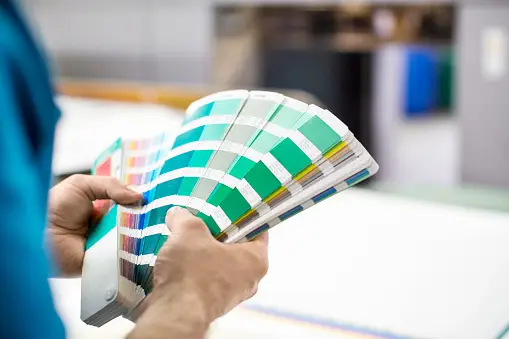
Color printing plays a crucial role in creating eye-catching marketing materials and professional business documents. However, it can also be costly. In this section, we will provide valuable tips and tricks to help businesses maximize the efficiency of their color printing while keeping costs under control.
One of the key techniques for efficient color printing is using the CMYK color model. CMYK (Cyan, Magenta, Yellow, and Black) is the standard color model used in commercial printing. By converting your color images to CMYK before printing, you can achieve accurate and vibrant color reproduction, ensuring that your prints look just as you intended.
Optimizing color settings is another important aspect of efficient color printing. Adjusting the color saturation, brightness, and contrast settings can greatly impact the final print quality. Experimenting with different settings and test prints can help you find the optimal balance between color accuracy and cost-effectiveness.
Choosing the right color profiles is also crucial for efficient color printing. Color profiles define how colors are interpreted and reproduced across different devices. By selecting a color profile that aligns with your printing needs, you can ensure consistent and accurate colors in your prints while maximizing ink savings.
By implementing these strategies – using the CMYK color model, optimizing color settings, and choosing the right color profiles – businesses can achieve cost-effective color prints without compromising on the visual impact of their materials.
Exploring Digital Printing for Cost-Effectiveness
Digital printing has emerged as a cost-effective and flexible printing technology that offers numerous advantages for businesses. In this section, we will delve into the reasons why digital printing can be a more economical option compared to traditional offset printing. We will also compare the costs associated with digital printing and offset printing, highlighting the pros and cons of each method. By understanding the cost differences between these two printing technologies, businesses can make informed decisions to save money without compromising on quality.
Why Digital Printing Can Be More Economical

Digital printing offers several features that make it a cheap printing solution for businesses. Here are some reasons why digital printing can be more economical:
- Low setup costs: Digital printing eliminates the need for expensive setup processes, such as creating printing plates, which are required in offset printing. This significantly reduces the initial costs associated with printing.
- No minimum print quantity: With digital printing, businesses can print as little as a single copy or in small quantities. This eliminates the need to invest in large print runs, reducing wastage and storage costs.
- Quick turnaround time: Digital printing allows for faster printing speeds and shorter production timeframes. This means businesses can minimize waiting periods and meet tight deadlines without incurring rush printing fees.
- Variable data printing: Digital printing enables businesses to personalize each print with unique information, such as customer names or addresses. This targeted approach can improve marketing effectiveness while avoiding the costs associated with pre-printed stock.
Comparing Digital vs. Offset Printing Costs
It is essential to compare the costs of digital printing and offset printing to determine which method is more suitable for your printing needs. Here is a breakdown of the cost factors involved:
| Cost Factors | Digital Printing | Offset Printing |
|---|---|---|
| Setup Costs | Low | High |
| Print Quantity | No minimum | Higher quantities for cost-effectiveness |
| Printing Speed | Faster | Slower |
| Variable Data Printing | Available | Not available or additional cost |
| Color Accuracy | Good | Excellent |
| Print Quality | High-quality, suitable for most applications | High-quality, especially for complex designs and large print quantities |
While digital printing offers advantages in terms of low setup costs, flexibility in print quantities, and personalized printing capabilities, offset printing excels in color accuracy, print quality, and cost-effectiveness for large print quantities. Businesses should carefully evaluate their printing requirements and budget constraints to determine which printing method best suits their needs.
By considering the cost aspects and benefits of digital printing and offset printing, businesses can make cost-effective decisions that meet their printing goals without compromising on quality.
Optimizing Print Quantities for Budget-Friendly Solutions
Optimizing print quantities is a key strategy for businesses looking to achieve cost-effective printing solutions. By carefully planning and managing print quantities, businesses can maximize their savings without compromising on quality. In this section, we will explore two important aspects of print quantity optimization: the benefits of bulk printing orders and how to accurately estimate your printing needs.
The Perks of Bulk Printing Orders
Bulk printing orders offer significant cost savings per unit and reduced setup costs. When you print in large quantities, the cost per print decreases due to economies of scale. Printing companies can optimize their production processes and take advantage of efficiencies when handling larger volumes. As a result, businesses can enjoy lower unit costs, making bulk printing orders a great cost-saving option.
In addition to cost savings, bulk printing orders also provide businesses with ample stock, ensuring a steady supply of printed materials. This can be particularly beneficial for businesses that frequently use marketing collateral or other printed materials. By having a surplus of printed items, businesses can avoid the need for rush orders or reprints, saving both time and money.
How to Estimate Your Printing Needs Accurately
Accurately estimating your printing needs is an essential step in optimizing print quantities and avoiding unnecessary expenses. By understanding your requirements and planning ahead, you can ensure that you print the right quantity of materials, minimizing waste and reducing costs.
To estimate your printing needs accurately, consider the following factors:
- Usage: Determine how frequently and for what purposes you will be using the printed materials. For example, if you regularly attend trade shows or events, you may need a higher quantity of business cards or brochures.
- Target audience: Consider the size of your target audience and the number of individuals you need to reach. This will help you gauge the quantity of materials required to effectively communicate your message.
- Seasonality: Take into account any seasonal fluctuations in demand for your products or services. Adjust your print quantities accordingly to avoid excess inventory.
- Future needs: Anticipate any upcoming marketing campaigns or events that may require additional printed materials. Plan ahead to avoid rushed reprints and higher costs.
By carefully analyzing these factors and working closely with your printing service provider, you can ensure that you estimate your printing needs accurately, optimizing your print quantities and achieving cost-effective solutions.
| Factors to Consider when Estimating Printing Needs | Impact on Print Quantities |
|---|---|
| Usage | Determines the frequency and quantity of printed materials needed. |
| Target audience | Affects the quantity required to effectively reach the intended recipients. |
| Seasonality | Influences the variation in demand and potential excess inventory. |
| Future needs | Accounts for upcoming campaigns or events to avoid rushed reprints. |
Utilizing In-House Design Services to Lower Expenses
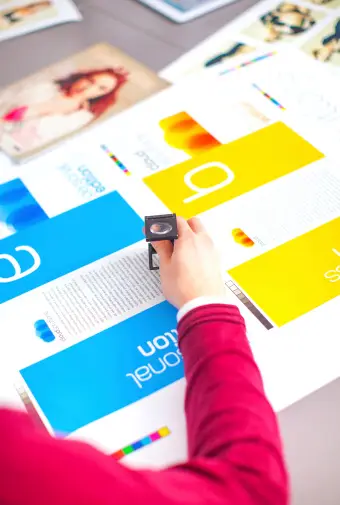
Businesses can significantly reduce their printing expenses by leveraging in-house design services. By utilizing the design expertise and resources available within the company, businesses can save money on outsourcing design work and achieve cost-effective print solutions.
There are several benefits of utilizing in-house design services:
- Cost-Saving Design Solutions: In-house designers can develop cost-saving design solutions that are tailored to the specific needs of the business. They can create designs that are optimized for printing, minimizing waste and reducing overall costs.
- Affordable Design Options: With in-house design services, businesses have more flexibility in budgeting for design work. They can allocate funds to cover design expenses without the additional costs associated with outsourcing to external agencies.
- Design Cost Reduction: In-house designers are familiar with the company’s brand guidelines and design requirements. This knowledge helps streamline the design process, resulting in faster turnaround times and reduced design costs.
To make the most of in-house design services and lower expenses, businesses can consider the following tips:
- Provide Clear Design Briefs: Clearly communicate your design requirements and expectations to the in-house designers. Providing a detailed design brief will help them understand the project scope and deliver designs that meet your needs.
- Optimize Design Processes: Collaborate with the in-house design team to optimize design processes and workflows. Find efficient ways to streamline design iterations and approvals to minimize design time and reduce costs.
- Invest in Design Tools and Resources: Ensure your in-house designers have access to the necessary design tools and resources. Equipping them with the right software and hardware can improve their efficiency and productivity, ultimately reducing design costs.
By leveraging in-house design services, businesses can achieve cost-effective and high-quality designs, resulting in significant savings on their overall printing expenses.
Tips on Getting Cheap Printing quotes from Printing Companies
Obtaining competitive quotes from printing companies is crucial for businesses looking for cost-effective printing solutions. Here are some tips to help you secure the best printing deals:
How to Negotiate with Printers for Better Rates
When requesting printing quotes, don’t be afraid to negotiate with printers for better rates. Here’s how:
- Research the market prices for the printing services you require.
- Approach multiple printing companies and request quotes for your specific project.
- Compare the quotes received, taking into consideration both pricing and the quality of services offered.
- Contact the printers and discuss the possibility of reducing the quoted prices.
- Highlight any competitive quotes you have received from other companies to leverage better rates.
- Consider long-term partnerships with printers and discuss the potential for discounted rates on future projects.
Understanding the Fine Print in Printing Quotes
It’s crucial to understand the fine print in printing quotes to avoid any hidden costs. Here’s what to look out for:
- Read the quotes carefully and ensure that all the required services are included.
- Pay attention to any additional charges, such as setup fees, rush fees, or extra revisions.
- Check if there are any restrictions on the number of revisions or changes allowed.
- Understand the timeline for delivery and any associated fees for expedited shipping.
- Review the payment terms and conditions, including any applicable discounts for timely payment.
- Clarify the rights and ownership of the final printed materials.
By following these tips and closely reviewing the quotes and contracts, businesses can ensure they secure competitive pricing and avoid any unpleasant surprises when it comes to cost.
| Frequently Asked Questions | Answers |
|---|---|
| Is it always possible to negotiate prices with printing companies? | While negotiation is not always possible, many printing companies are open to discussing pricing to win your business. |
| What if I receive quotes with significantly different pricing? | It’s essential to consider both the price and the quality of services offered. Cheaper quotes may sacrifice quality, so weigh the options carefully. |
| Can printers charge extra for rush orders? | Yes, printers may charge additional fees for rush orders to prioritize your project and ensure quick turnaround times. |
Conclusion
In conclusion, achieving cost-effective printing without compromising on quality is a realistic goal for businesses of all sizes. By implementing the cost-saving measures discussed throughout this article, businesses can significantly reduce their printing expenses while maintaining high standards of print quality.
Summarizing Cost Saving Measures in Quality Printing
Throughout this article, we have explored various strategies and tips to help businesses save money on their commercial printing needs. We have discussed the importance of understanding commercial printing costs, evaluating professional printing service providers, and utilizing cheap printing strategies such as bulk printing and in-house design services.
Furthermore, we have highlighted the significance of effective planning and design in achieving cost savings, choosing the right paper type and print size, maximizing the efficiency of color printing, and exploring the cost-effectiveness of digital printing. Additionally, optimizing print quantities and obtaining competitive quotes from printing companies can also contribute to significant cost savings.
Final Thoughts on Cheap Printing without Compromises
In today’s competitive business landscape, finding affordable printing solutions without compromising on quality is essential. By implementing the cost-saving measures discussed in this article, businesses can successfully navigate the challenges of commercial printing costs and achieve high-quality prints within their budget.
It is important to remember that cost-effective printing requires a balance between cost-saving strategies and maintaining print quality. By working with reliable printing service providers, utilizing efficient printing technologies, and making informed choices about design, paper type, and print quantities, businesses can achieve affordable printing without compromising on the overall quality of their prints. By implementing these strategies, businesses can optimize their printing expenses and allocate their savings towards other critical aspects of their operations.
FAQ
How can I save money on commercial printing without sacrificing quality?
There are several strategies you can implement to achieve cost-effective printing without compromising on quality. These strategies include optimizing print quantities, utilizing in-house design services, choosing the right paper type and print size, and exploring digital printing options. By implementing these strategies, you can achieve significant savings on your printing expenses while still maintaining high-quality prints.
What factors influence the cost of commercial printing?
Several factors can influence the cost of commercial printing. These include print volume, material selection, and the choice of printing technology. Print volume affects pricing, with higher quantities often resulting in lower costs per unit. Material selection can also impact the budget, as specialty papers may be more expensive than standard options. Additionally, the choice between digital and offset printing technologies can have cost implications.
How can I choose a reliable and professional printing service provider?
When evaluating printing service providers, it is important to consider their reputation, customer reviews, and the quality of their prints. It is also important to assess the level of customer service they provide, as excellent customer service can ensure a smooth printing process. By choosing a printing company with a good reputation and great customer reviews, you can ensure that you receive high-quality prints and excellent service at competitive prices.
What are some cheap printing strategies for my business?
There are several cost-saving strategies you can implement to achieve cheap printing for your business needs. These strategies include bulk printing, using standard paper sizes, optimizing print quantities, and utilizing in-house design services. By implementing these tactics, you can achieve significant savings on your printing expenses without compromising on the quality of your prints.
How can planning and design help in achieving cheap printing?
Effective planning and thoughtful design can play a crucial role in achieving cost-effective printing. By consulting with printing experts early on and optimizing design elements such as font selection, layout optimization, and color choices, you can minimize unnecessary expenses while still maintaining a high-quality print. Early consultation with printing experts can help you optimize printing processes and costs, while design considerations can contribute to economical printing without compromising on aesthetic appeal.
How can I choose the right paper type and print size to save money on printing?
Choosing the right paper type and print size can have a significant impact on printing costs. Using standard paper sizes and weights is generally more cost-effective compared to specialty papers. However, there may be instances where specialty papers are necessary to meet specific printing requirements. By making informed choices about printing materials, you can save money while still maintaining the quality of your prints.
How can I maximize the efficiency of color printing?
Color printing can be expensive, but there are strategies you can implement to maximize its efficiency. This includes using the CMYK color model, optimizing color settings, and choosing the right color profiles. By implementing these techniques, you can achieve cost-effective color prints without compromising on visual impact.
Why should I consider digital printing for cost-effectiveness?
Digital printing offers cost-effectiveness and flexibility compared to traditional offset printing. With digital printing, you can print in smaller quantities, reducing waste and setup costs. It also allows for quick turnaround times and easy customization. Comparing digital printing costs with offset printing costs can help you make an informed decision based on your specific printing requirements and budget.
How can I optimize print quantities for budget-friendly solutions?
Optimizing print quantities is crucial for achieving budget-friendly solutions. By ordering in bulk, you can take advantage of cost savings per unit and reduce setup costs. Accurately estimating your printing needs is also essential to avoid unnecessary expenses. By optimizing print quantities, you can achieve significant savings on your printing budget.
Can utilizing in-house design services help in lowering expenses?
Utilizing in-house design services can be a cost-effective option for businesses. By leveraging in-house design expertise, you can reduce outsourcing expenses and have more control over the design process. This can lead to significant cost savings while maintaining the quality of your printed materials.
How can I get cheap printing quotes from printing companies?
To obtain competitive quotes from printing companies, it is important to reach out to multiple providers and compare their pricing. You can also negotiate with printers for better rates by providing them with specific details about your printing requirements and asking for any available discounts. Understanding the fine print in printing quotes and contracts is important to avoid any hidden costs. By being proactive in obtaining quotes and understanding the terms, you can secure the best printing deals.
